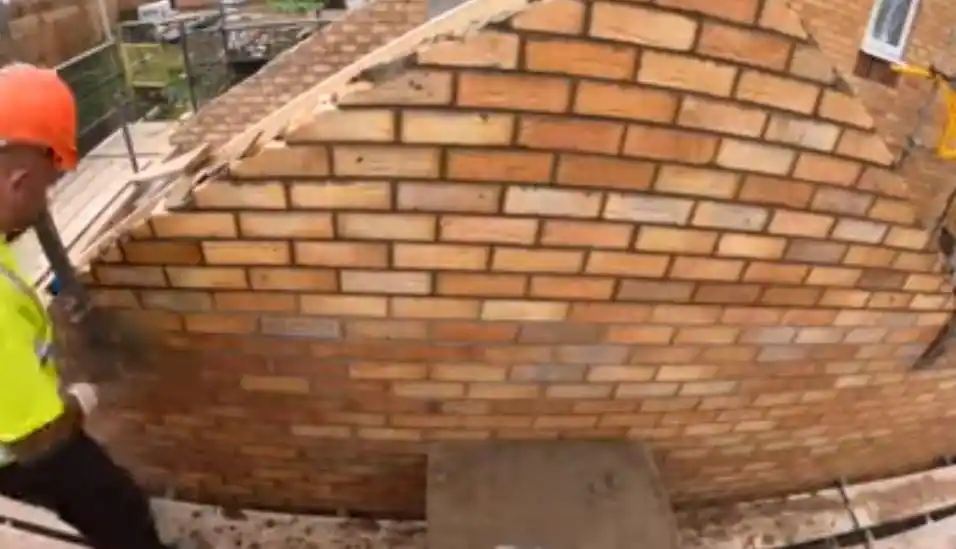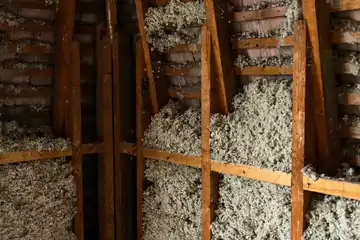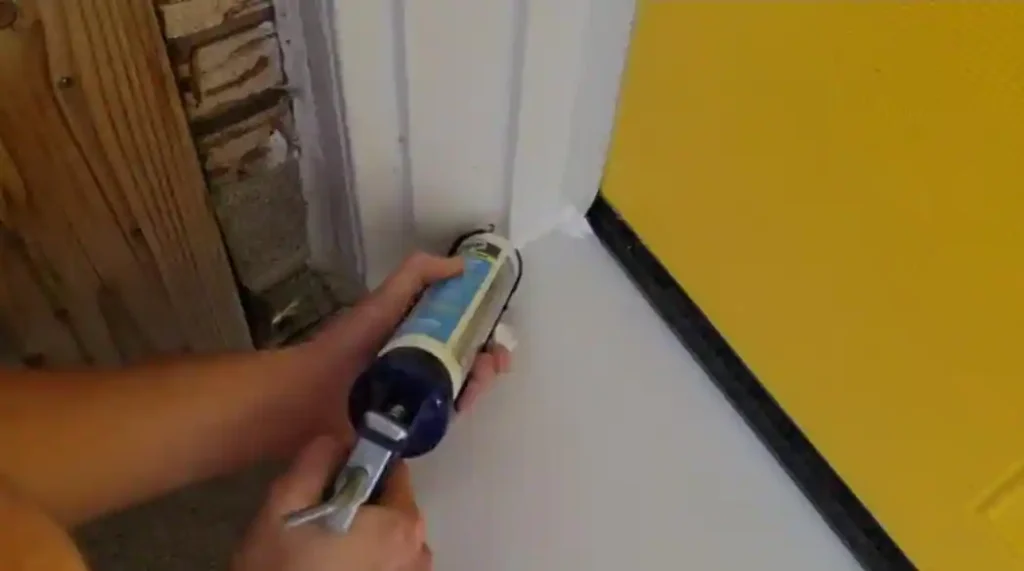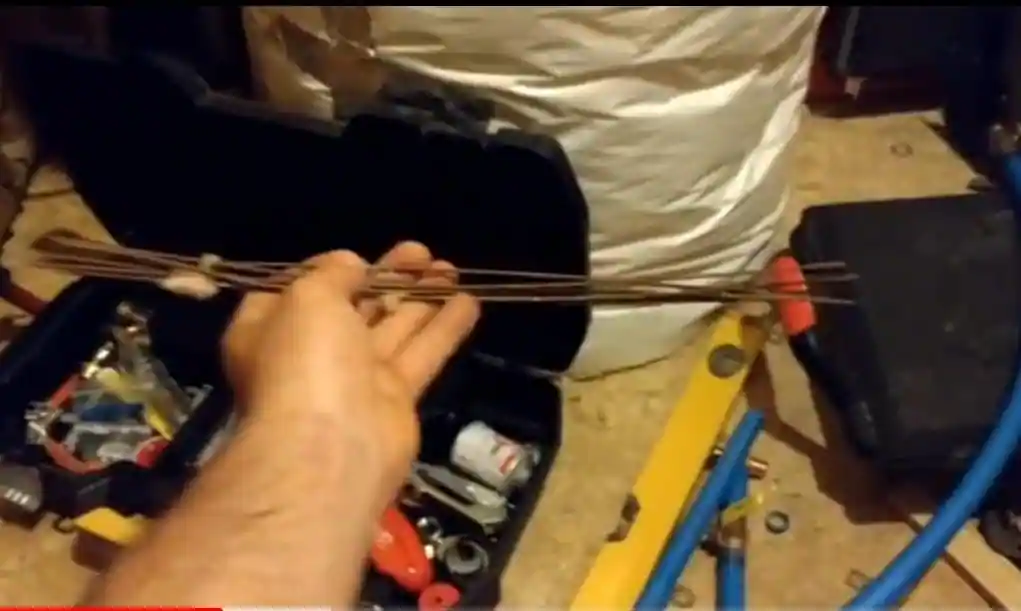How to insulate brick garage , this post is also most important. Insulating your brick garage is a prudent investment that will increase comfort, lower energy expenses, and safeguard your things. Proper insulation is essential when transforming your garage into a workshop, home office, or simply improving its energy efficiency.
Are you tired of your garage seeming like an icebox in the winter and Hell in the summer? If you have a single brick wall garage, you may have felt the agony of severe temperatures seeping through the walls. But don’t worry, there is a solution that may transform your frigid garage into a cozy oasis: insulation.
Insulating a single brick wall garage is a smart investment in both your comfort and your home’s energy efficiency.
In this post, we’ll look at the finest materials and methods for properly insulating your brick garage. In our previous post, we shared information about How to insulate garage floor, if you didn’t read then click and read the post.
How To Insulate Brick Garage/ Insulating A Brick Garage

To insulate brick garage you should follow the following steps, these steps are very easy and necessary for achieving higher insulation quality.
Step 1: Assess Your Garage
Before you start insulating your garage, evaluate its existing state. Check for any existing insulation, drafts, or moisture problems. Look for any gaps around windows, doors, and other openings that may require sealing. Understanding your garage’s layout and potential issue areas can allow you to design your insulation job more successfully.
Step 2: Select the Right Insulation Material.
There are various ways to insulate a brick garage, by using the different materials, you may select anyone according to your need and budget.
Foam Board Insulation:- How to insulate brick garage
Extruded polystyrene (XPS) and expanded polystyrene (EPS) foam boards are popular options for brick wall insulation. They have high R-values and are moisture-resistant, making them ideal for garage situations.
Foam board insulation is a popular alternative for insulating single-brick garage walls due to its high R-value and ease of application. Foam board insulation comes in both extruded polystyrene (XPS) and expanded polystyrene (EPS) forms and provides high heat resistance while also functioning as a moisture barrier. It can be trimmed to fit snugly between studs or glued directly to the brick wall using adhesive.
Spray Foam Insulation:-
Closed-cell spray foam insulation has good thermal properties and can efficiently fill gaps and cracks. It clings effectively to brick surfaces and provides excellent air-sealing capabilities.
Spray foam insulation, have good excellent thermal efficiency as well as this insulation can easily conform to uneven forms and surfaces, making it perfect for insulating single brick wall garages. Closed-cell spray foam insulation has a greater R-value than open-cell spray foam and effectively closes air leaks, which improves energy efficiency. While spray foam insulation is more expensive initially, it can result in long-term energy savings and increased comfort.
Fibreglass Insulation:
Fibreglass batts or rolls can be used to insulate brick walls; however, they may necessitate additional precautions to prevent moisture accumulation. To avoid mold growth, use fiberglass insulation with sufficient ventilation.
Fibreglass batt insulation is an inexpensive choice for insulating single brick wall garages. Fiberglass insulation comes in pre-cut batts or rolls and is reasonably simple to install between studs and joists. While fiberglass batts may not have the same R-value as foam board or spray foam insulation, when correctly constructed, they can provide acceptable thermal resistance. To avoid air leakage, maintain a tight fit and adequate sealing.
Mineral wool insulation:-

Mineral wool insulation is another option that is noted for its fire resistance and soundproofing capabilities. It’s useful for insulating brick walls and has good thermal properties.
When deciding on the best insulation material for your brick garage, consider R-value, moisture resistance, fire safety, and ease of installation.
Reflective insulation
Reflective insulation is made up of layers of aluminum foil or reflective materials placed between layers of insulation, like foam or fiberglass. This sort of insulation deflects radiant heat away from the garage’s interior, allowing it to remain at a suitable temperature. Reflective insulation is lightweight as well as simple to install, making it an attractive choice for DIY applications.
However, it may be less effective in colder areas, where radiant heat transfer is less important.
Choosing the correct insulation material for a single brick wall garage is vital for maximizing energy efficiency and comfort.
Step 3: Prepare the surface.
Before you add insulation, clean the brick surface completely and repair any fractures or damaged areas. Remove any existing insulation if needed and fix any moisture issues to avoid future problems.
Step 4: Install insulation.
Once the surface has been prepared, it is time to put the insulation material. Follow the manufacturer’s directions attentively to ensure correct installation.
If using foam board insulation or spray foam, cut it to size and attach it to the walls with adhesive or mechanical fasteners.
Measure and cut fibreglass or mineral wool insulation batts so that they fit snugly between the studs or joists.
When working with insulation materials, always wear suitable protection gear, such as gloves and a mask.
Step 5: Seal Gaps and Cracks.

To increase energy efficiency and prevent air leaks, use caulk or expanding foam to fill any gaps and cracks around windows, doors, and other openings. Pay attention to areas where pipes, wires, or ducts penetrate the walls and seal them properly.
Step 6: Consider the Vapour Barrier.
Depending on your environment and local construction requirements, you may need to install a vapor barrier to keep moisture from entering the insulated room. Consult a local building specialist to establish whether a vapor barrier is required for your garage insulation project.
Step 7: Finish the walls. After the insulation has been installed and sealed, you can finish the walls with plasterboard, paneling or other materials to improve the appearance of your garage. Consider installing insulation to the ceiling and garage door to increase energy efficiency and comfort.
At last, we can say, that insulating your brick garage can help to enhance comfort, energy efficiency, as well as durability of your brick garage. According to insulation experts by selecting the appropriate insulation materials as well as following proper installation procedures, you can help to create a well-insulated room that will meet your needs for years to come. If you’re not sure how to best insulate your garage, go to a professional contractor or insulation specialist for personalized advice.
Insulating Single Brick Wall Garage
Transforming a single brick garage into a comfortable and energy-efficient area can greatly increase its usability and value. Insulating the garage is an important step if you plan to use it as a workshop, home gym, office, or simply to protect your vehicles from excessive temperatures. In this detailed guide, we will look at the materials, processes, and benefits of insulating a single brick garage.
Why Insulate a Single Brick Garage? Benefits of insulating a brick garage
Before we go into the insulation process, let’s first understand why it’s important to insulate a single brick garage:
Temperature Regulation:
Insulation helps to keep temperatures steady inside the garage, keeping it from being too hot in the summer or cold in the winter.
Energy efficiency:- insulating single brick wall garage
Proper insulation lowers heat transfer, which results in lower energy bills by reducing the demand for heating and cooling.
Increase Comfort Level:
Insulating the garage makes it more comfortable to do tasks like woodworking, vehicle maintenance, and hobbies.
Moisture Control:- insulating single brick wall garage
Insulation can assist prevent moisture buildup, which lowers the danger of mold, mildew, and structural damage.
Soundproofing:
Insulation reduces noise from both inside and outside the garage.
Materials needed:- Insulating a brick garage

Before you begin the insulating process, gather the necessary materials:
Insulation:
Select insulation materials that are appropriate for your garage, such as fiberglass batts, rigid foam boards, or spray foam insulation.
Vapor Barrier:
A vapor barrier helps keep moisture from infiltrating the insulation. Polyethylene sheets and vapor barrier paint are two possible options.
Insulation Hangers/Staples:
These are used to hold the insulation in place.
Caulk or Foam Sealant:
Fill any gaps or cracks to prevent air leaks.
Protective Gear:
To avoid insulation fibres and dust, wear gloves, goggles, and a mask.
Steps For Insulate Singal Brick Garage-
Steps for Insulating a Single Brick Garage Follow these procedures to adequately insulate a single brick garage.
Assess the existing conditions:
Examine the garage’s walls, ceiling, and floor for any existing insulation or moisture issues. Check for cracks, gaps, and air leaks that need to be sealed.
Select the Right Insulation:
When deciding on insulation, consider R-value, material cost, and simplicity of installation.
Ensure that the insulation material you choose is appropriate for garage use and complies with local construction codes.
Prepare the garage- insulating single brick wall garage
Remove any clutter from the walls and ceilings. Clean the surfaces to eliminate dust, debris, and oil.
Seal gaps and cracks.
Use caulk or foam sealant to fill gaps around windows, doors, electrical outlets, and other openings. Pay close attention to locations where pipes or cables enter the garage.
Install a vapor barrier.
If utilizing a vapor barrier, follow the manufacturer’s recommendations.
Overlap the seams and use tape or staples to keep the barrier in place.
Install insulation:
Measure and cut insulation panels or batts so they fit snugly between the studs or joists. Use insulation hangers or staples to keep the insulation in place. Install insulation tightly against the walls, ceiling, and floor without squeezing it.
Seal and insulate garage doors.
To avoid drafts, apply weatherstripping or a garage door seal to the garage door’s bottom. Consider putting insulation panels or reflecting barriers on the inside of the garage door to provide extra insulation.
Consider other measures:
Depending on your budget and demands, you may want to consider installing radiant barrier insulation, reflective roof coatings, or a temperature control HVAC system.
Advantages of Insulating a Single-Brick Garage:
Insulating a single brick garage has several advantages:
Improved Comfort:- insulating single brick wall garage
Insulation keeps the garage at a suitable temperature throughout the year, making it more pleasurable for a variety of activities.
Saves Energy:- insulating single brick wall garage Benefits
Insulation can help to save energy by minimizing heat transfer, which can help to decreases heating as well as cooling utility expenditures.
Moisture Protection:
Proper insulation prevents moisture buildup, which reduces the risk of mold, mildew, and structural damage.
Increased Durability:
Insulation can increase the structural integrity of the garage by reducing temperature changes and wear and tear.
Increased property value:
A well-insulated garage adds value to your home and makes it more appealing to potential purchasers.
Insulating a single brick garage is a worthwhile investment that will improve its comfort, energy efficiency, and value.
And you have done it! By following the procedures given in this post as well as selecting the appropriate materials, you can turn your garage into a diverse and useful area that will satisfy your needs for years to come. Insulating your garage is a decision you won’t regret, whether you plan to do it yourself or hire a professional.
Sum Of Post, How To Insulate Brick Garage and Insulating A Brick Garage
When deciding between foam board insulation, spray foam insulation, fiberglass batts, and reflective insulation, keep R-value, simplicity of installation, and affordability in mind. To guarantee correct installation and optimal performance, follow manufacturer instructions as well as local building codes. With the correct insulation material installed, you can convert your draughty garage into a well-insulated room suited for a variety of purposes.
Do let us know how you feel about this information by commenting.
Like our Facebook page and follow for other updates like this.
